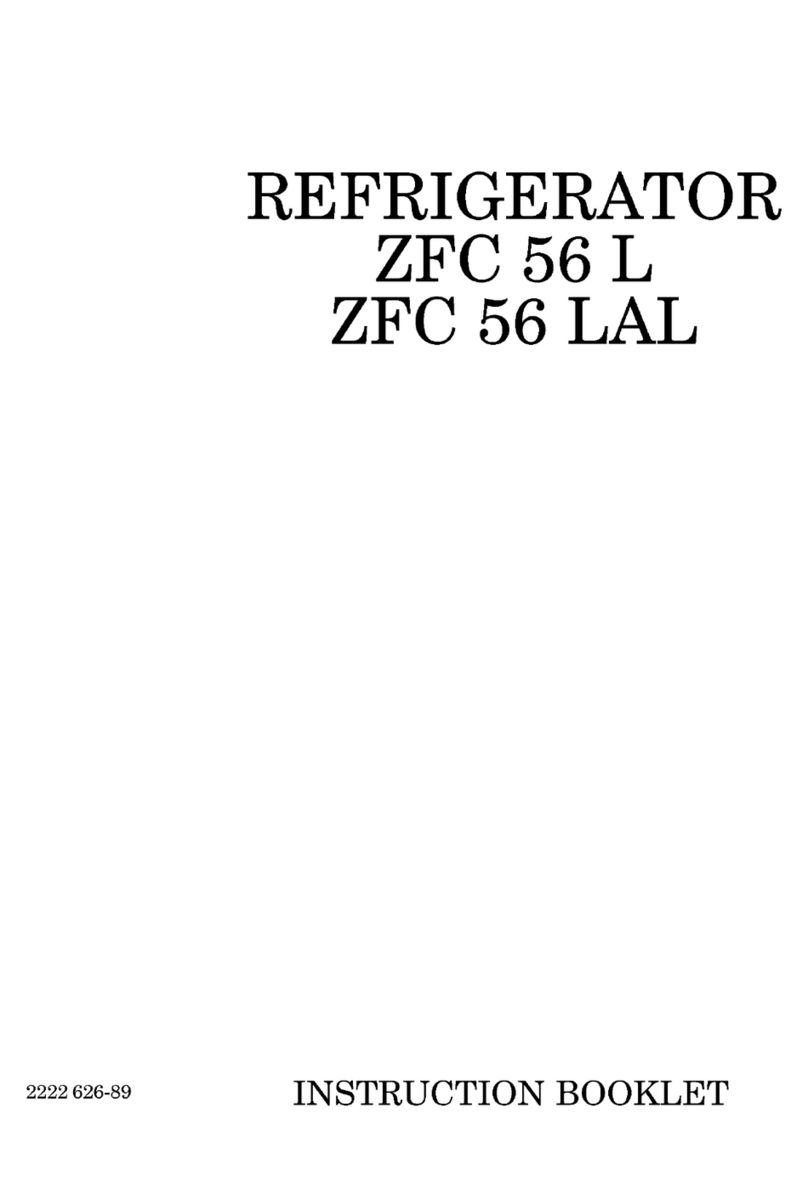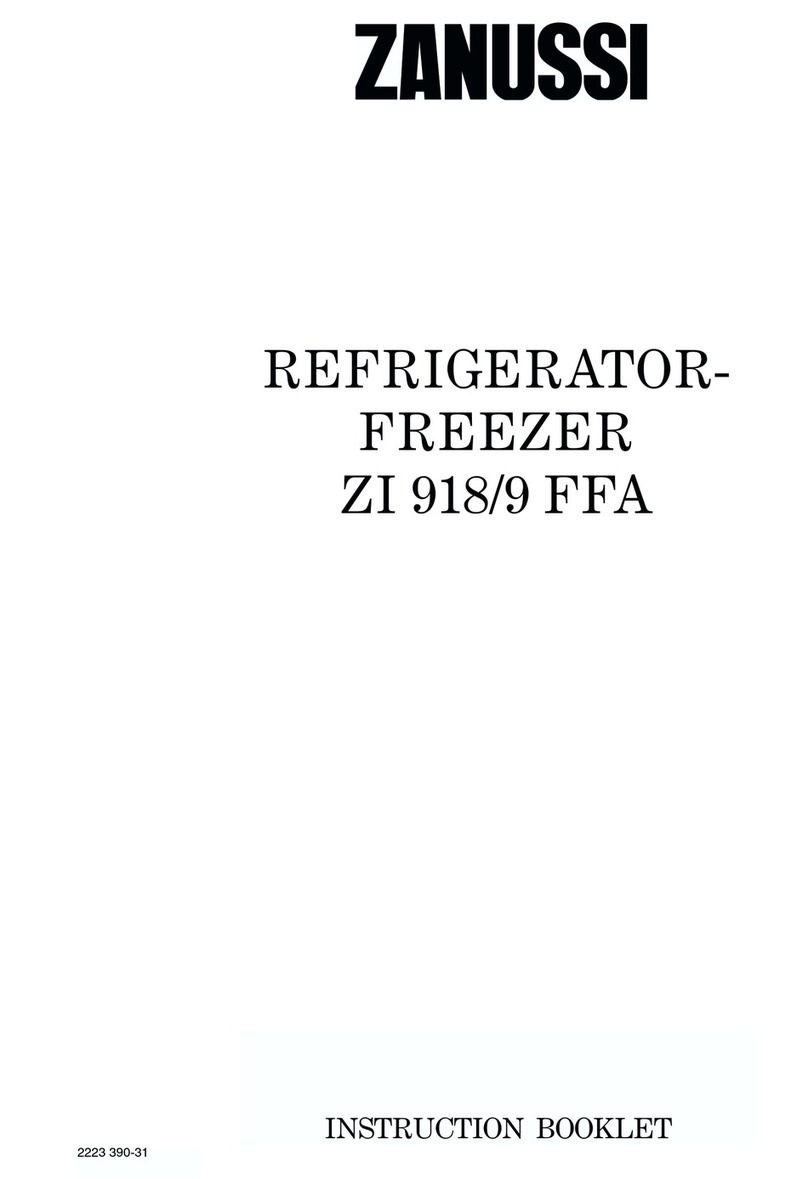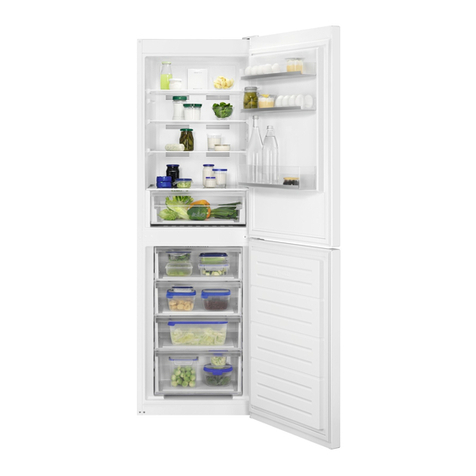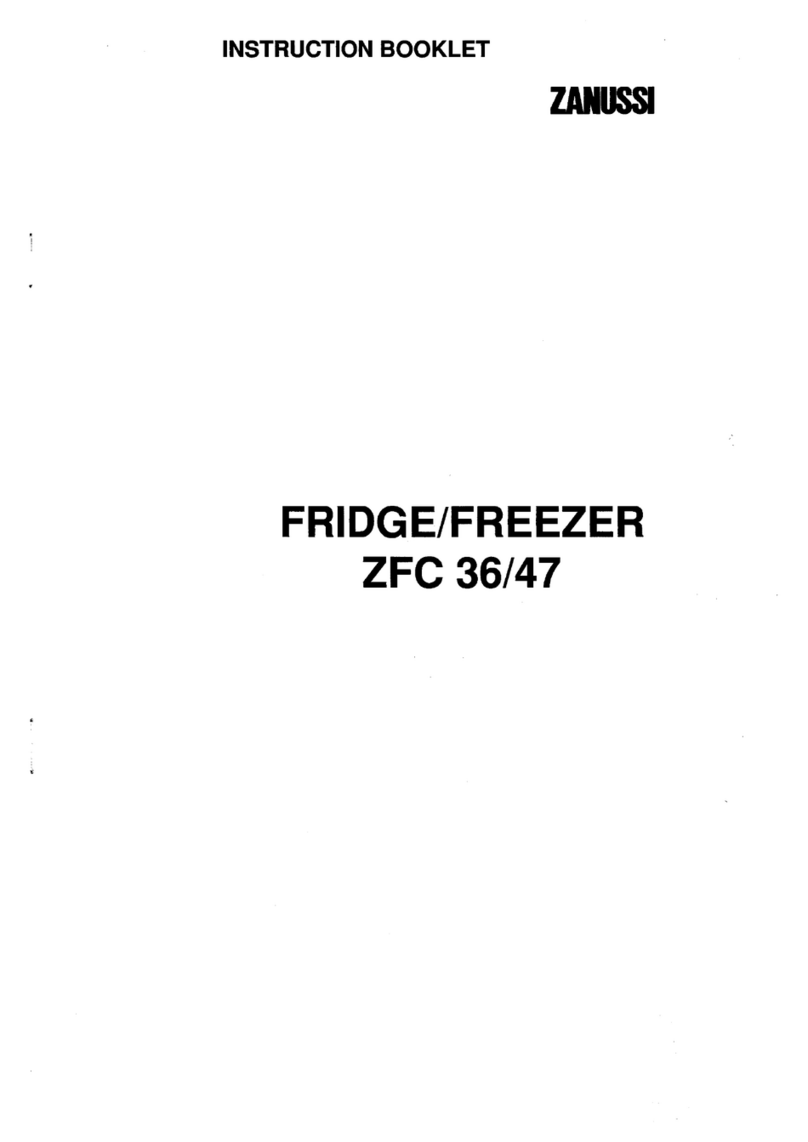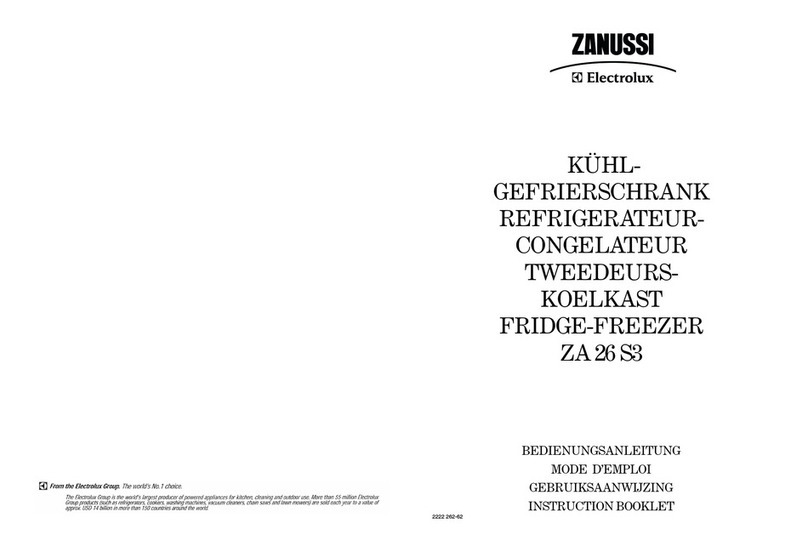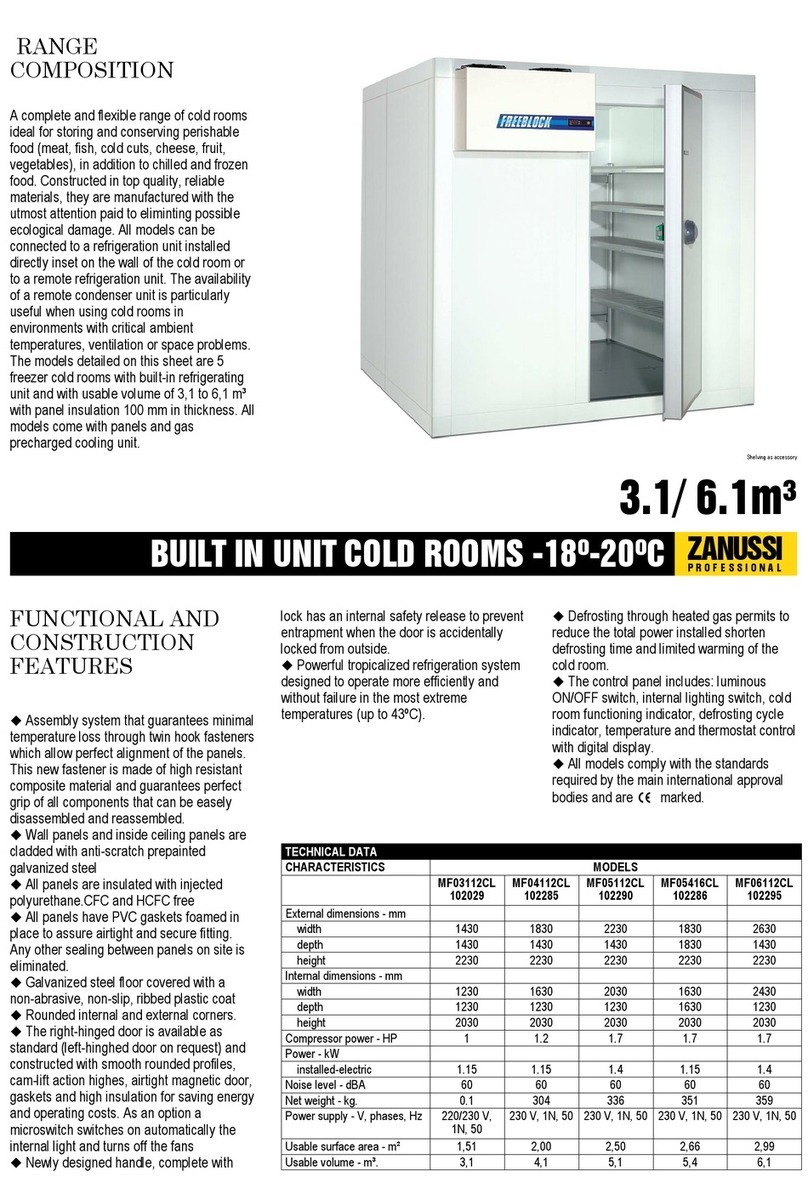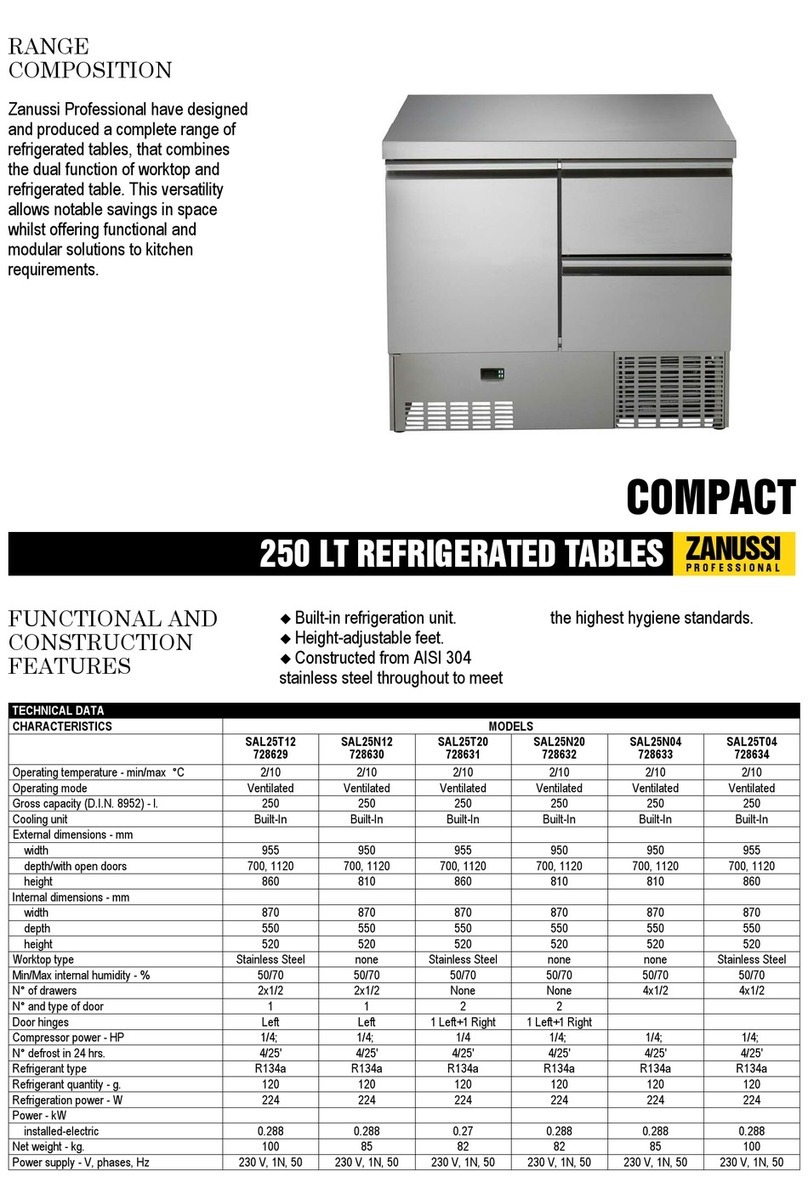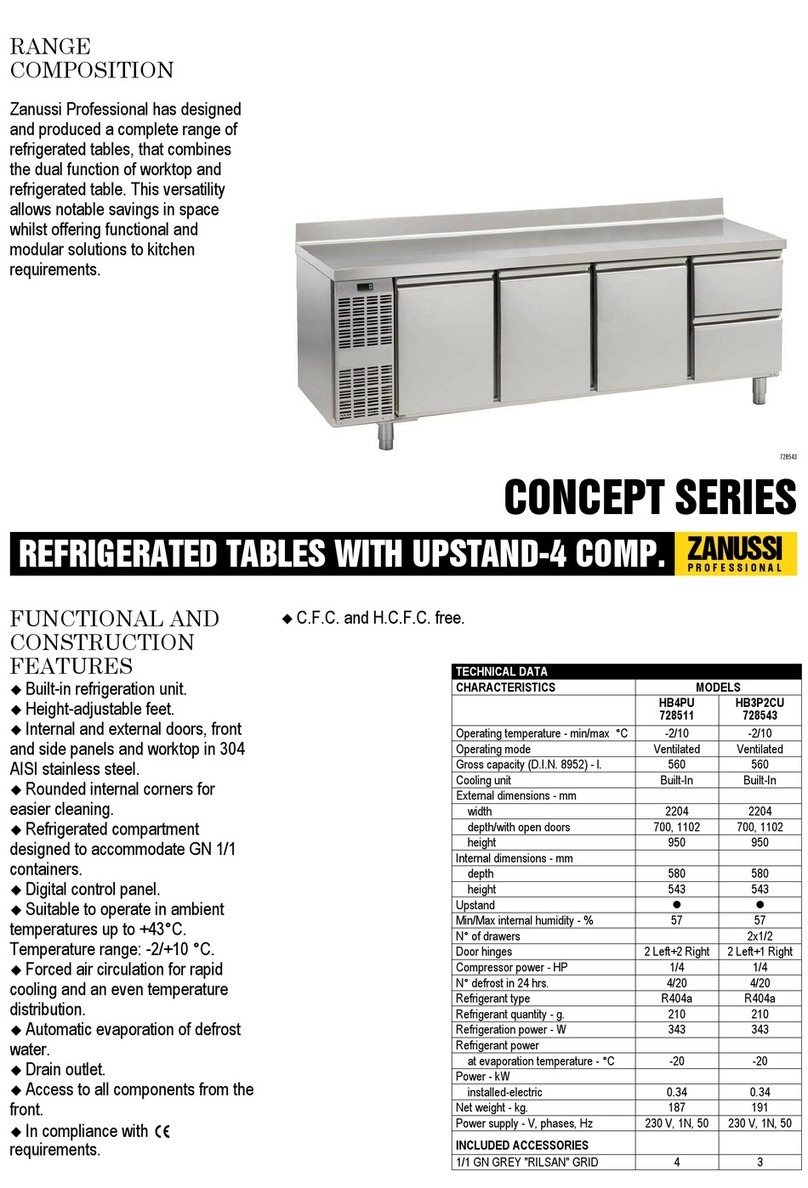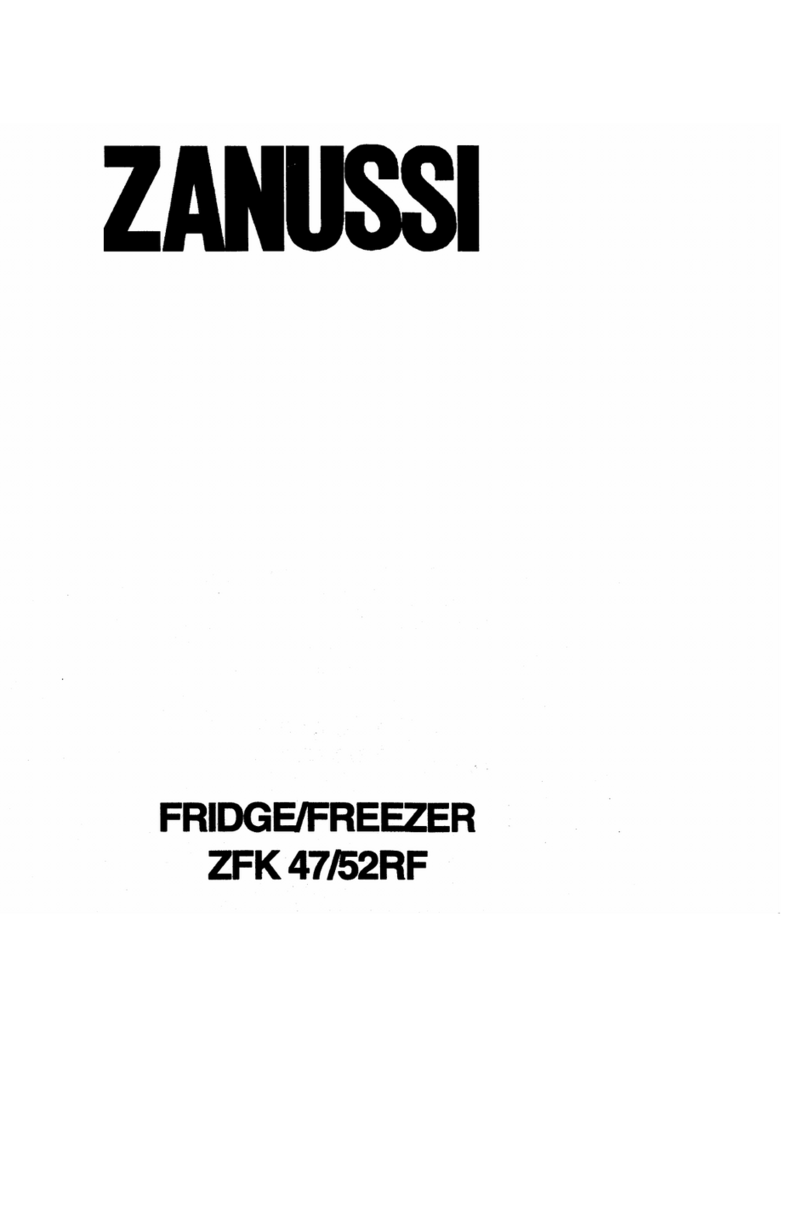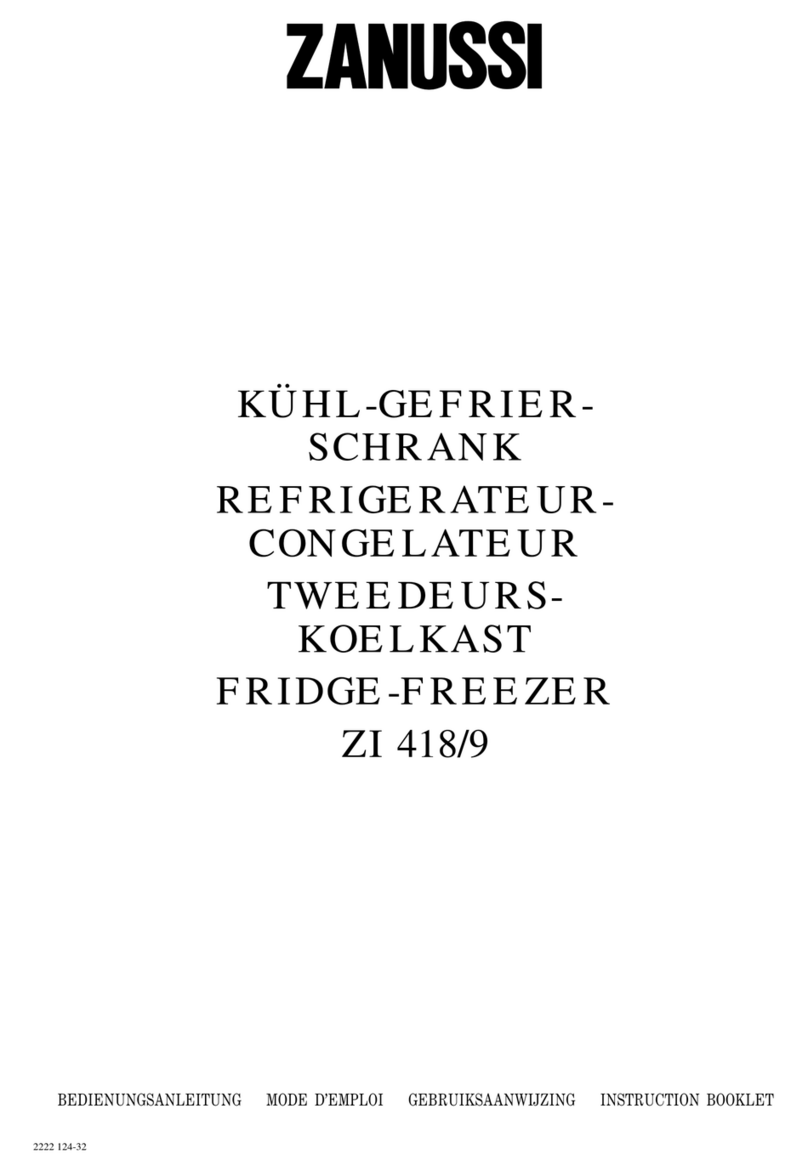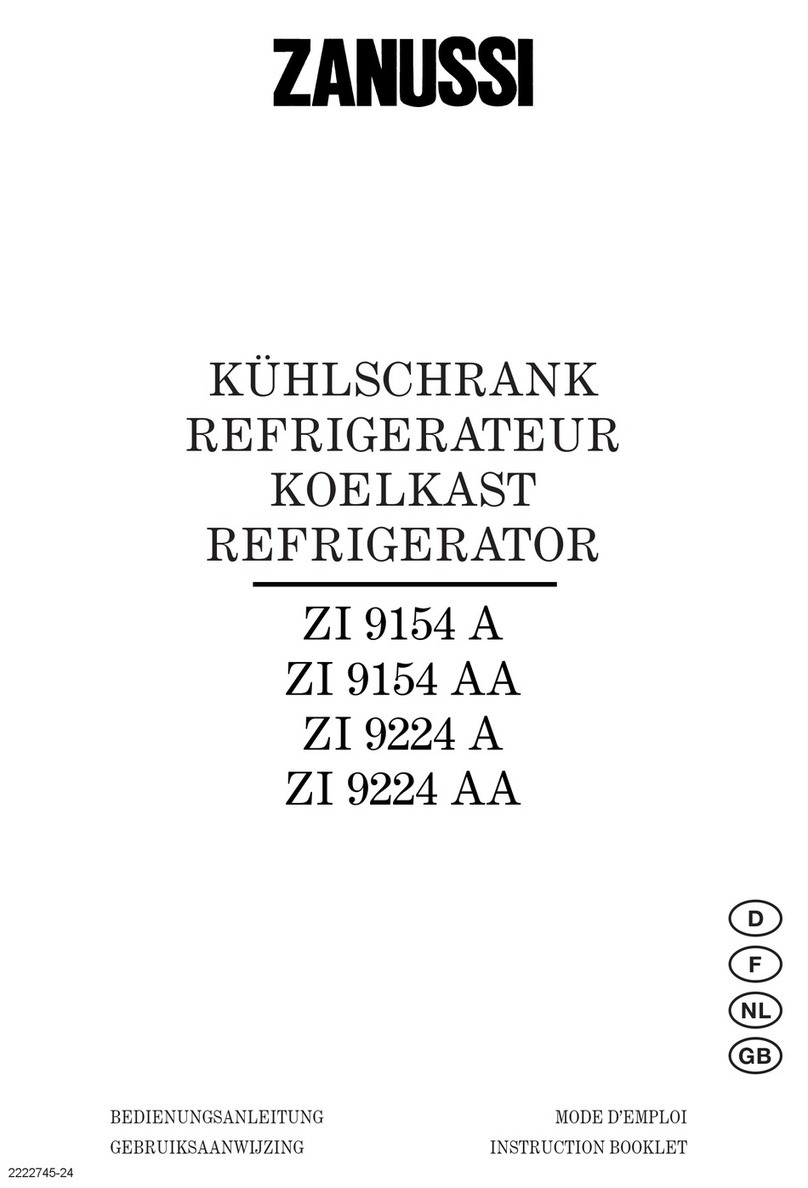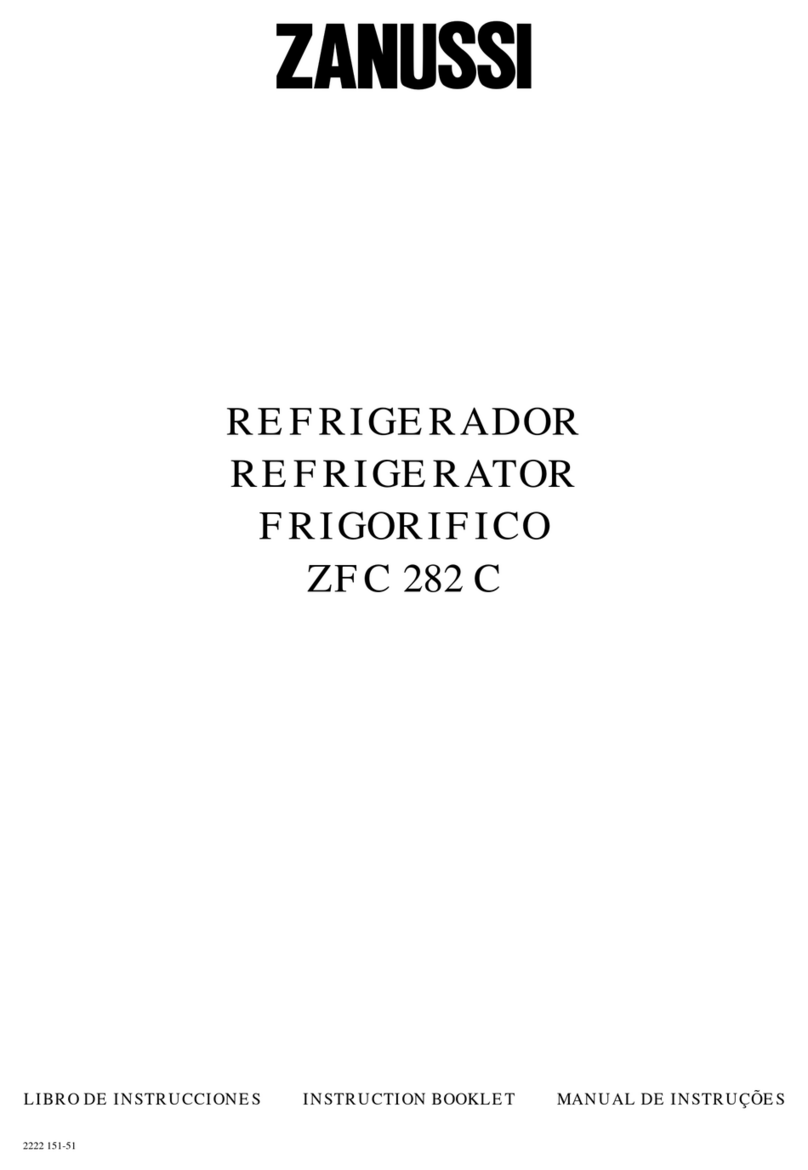13Printed on recycled paper
WARNINGS
It is ost i portant that this instruction book should be retained with the appliance for future
reference. Should the appliance be sold or transferred to another owner, or should you ove house
and leave the appliance, always ensure that the book is supplied with the appliance in order that the
new owner can be acquainted with the functioning of the appliance and the relevant warnings.
If this appliance featuring agnetic door seals is to replace an older appliance having a spring lock
(latch) on the door or lid, be sure to ake that spring lock unusable before you discard the old
appliance. This will prevent it fro beco ing a death-trap for a child.
These warnings are provided in the interest of safety. You ust read the carefully before installing or
using the appliance.
General Safety
•This appliance is designed to be operated by
adults. Children should not be allowed to tamper
with the controls or play with the product.
•It is dangerous to alter the specifications or
modify this product in any way.
•Before any cleaning or maintenance work is carried
out, be sure to switch off and unplug the appliance.
•This appliance is heavy. Care should be taken
when moving it
•Ice lollies can cause frost burns if consumed
straight from the appliance.
• Take ut ost care when handling your
appliance so as not to cause any da ages to
the cooling unit with consequent possible
fluid leakages.
• The appliance ust not be located close to
radiators or gas cookers.
• Avoid prolonged exposure of the appliance to
direct sunlight.
• There ust be adequate ventilation round the
back of the appliance and any da age to the
refrigerant circuit ust be avoided.
• For freezers only (except built-in odels): an
ideal location is the cellar or base ent.
• Do not use other electrical appliances (such
as ice crea akers) inside of refrigerating
appliances.
Service/Repair
•Any electrical work required to install this
appliance should be carried out by a qualified
electrician or competent person
•This product should be serviced by an authorized
Service Centre, and only genuine spare parts
should be used.
•Under no circumstances should you attempt to
repair the appliance yourself. Repairs carried out
by inexperienced persons may cause injury or
more serious malfunctioning. Refer to your local
Service Centre, and always insist on genuine
spare parts.
•This appliance contains hydrocarbons in its
cooling unit; maintenance and recharging must
therefore only be carried out by authorized
technicians.
Use
•The domestic refrigerators and freezers are
designed to be used specifically for the storage
of edible foodstuffs only.
•Best performance is obtained with ambient
temperature between +18°C and +43°C (class T);
+18°C and +38°C (class ST); +16°C and +32°C
(class N); +10°C and +32°C (class SN). The
class of your appliance is shown on its rating
plate.
Warning: when the ambient temperature is not
included within the range indicated for the class
of this appliance, the following instructions must
be observed: when the ambient temperature
drops below the minimum level, the storage
temperature in the freezer compartment cannot
be guaranteed; therefore it is advisable to use the
food stored as soon as possible.
•Frozen food must not be re-frozen once it has
been thawed out.
•Manufacturers’storage recommendations should
be strictly adhered to. Refer to relevant
instructions.
•The inner lining of the appliance consists of
channels through which the refrigerant passes. If
these should be punctured this would damage the
appliance beyond repair and cause food loss. DO
NOT USE SHARP INSTRUMENTS to scrape off
frost or ice. Frost may be removed by using a
plastic scraper. Under no circumstances should
solid ice be forced off the liner. Solid ice should be
allowed to thaw when defrosting the appliance.
24
•Ikke legg kullsyreholdige eller musserende
drikkevarer i fryseren, da det frembringer et trykk
i flasken som gjør at den kan bli sprengt i stykker
og dermed skade apparatet.
•Bruk ikke andre mekaniske redskaper eller
kunstige midler for åfremskynde
smelteprosessen enn de som anbefales av
produsenten.
Installasjon
•Under normal bruk vil kondensatoren og
kompressoren påbaksiden av apparatet bli svært
varme. Av sikkerhetsgrunner måde
minimumsmålene for ventilasjon som er vist på
den relevante figuren, overholdes.
Merk: Ventilasjonsåpningene måikke tilstoppes.
•Sørg for at apparatet ikke står påden elektriske
ledningen.
Viktig: dersom nettkabelen ødelegges, måden
skiftes ut med en spesialkabel eller et sett som
kan fåes ved henvendelse til produsenten eller
kundeservice.
•Visse deler i dette apparatet blir svært varme.
Sørg derfor alltid for at det er tilstrekkelig
ventilasjon. Hvis du unnlater ågjøre dette, kan du
risikere at komponenter bryter sammen, og at
matvarer går til spille. Se
installasjonsveiledningen.
INNHOLDSFORTEGNELSE
Advarsel og viktige opplysninger 23
Betjening 25
Innvendig rengøring 25
Betjeningspanel 25
Innkopling 25
Temperaturregulering 25
Romtemperaturknott 25
Nedfrysing av matvarer og lagring av
frysevarer 26
Opptining 26
Isbiter 26
Hyllene kan justeres i høyden 27
Plassering av hyllene og leskedrikkautomatene
i døren 27
Crisp’n fresh 27
Råd 28
Råd for kjøling 28
Råd for frysing 28
Råd for oppbevaring av frossenmat 28
Vedlikehold 29
Regelmessig rengjøring 29
Avstenging 29
Innvendig belysning 29
Avriming 29
Driftsforstyrrelser 30
Garanti 30
Installering 31
Plassering 31
Elektrisk tilkopling 31
Bakre avstandsstykker 31
Omhengsling av dør32
•Deler som blir varme, bør være tildekket. Om
mulig bør baksiden av apparatet ståopp mot en
vegg.
•Hvis apparatet har vært transportert liggende,
kan det forekomme at oljen i kompressoren løper
ut i kjølekretsløpet. Det er derfor best åvente
minst to timer før apparatet tilkobles slik at oljen
kan renne tilbake i kompressoren.
Miljøvern
•Dette apparatet inneholder ikke gasser
so kan skade ozonlaget, verken i
kjølesyste et eller i isolerings aterialet.
Apparatet å ikke skrotes sa en ed
husholdningsavfall eller dagrenovasjon.
Unngå å skade kjølesyste et, spesielt på
baksiden nær var eveksleren.Ta
eventuelt kontakt ed ko unen for å få
opplysninger o lokale ottaksstasjoner
for spesialavfall. Alle aterialer på
apparatet so er erket ed sy bolet
kan resirkuleres.



